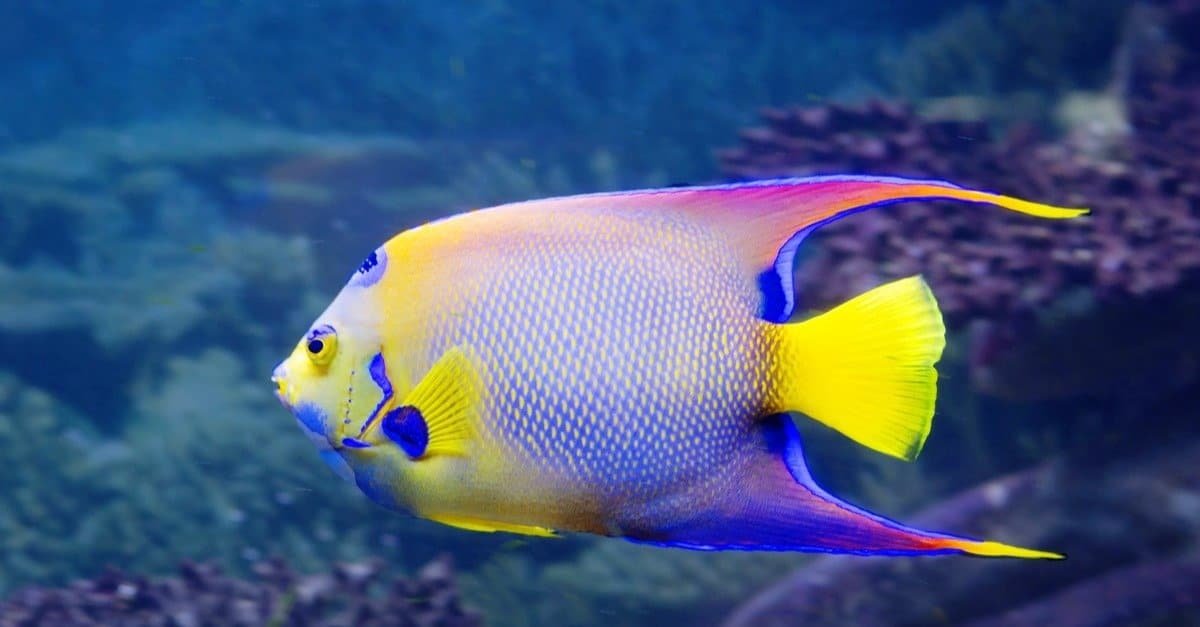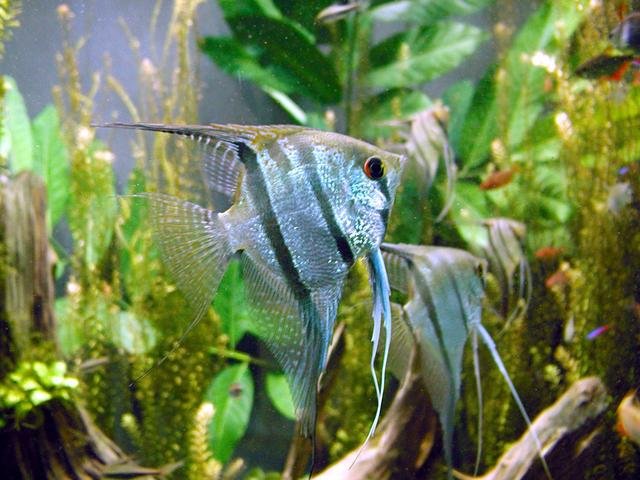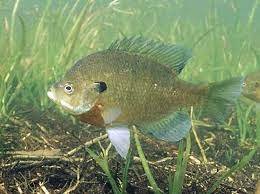Angelfish Facts, FAQs, Behaviour, Habitat, Conservation and More
 Angelfish Facts
Angelfish FactsAngelfish Facts | Description | Distribution and Habitat | Conservation | Behaviour and Ecology | Interaction with Human | Cultural | Interesting facts | frequently asked questions about Angelfish
Looking for an elegant and mesmerizing addition to your aquarium? Look no further than the stunning Angelfish! With their vibrant colors and graceful movements, Angelfish are a favorite among fish enthusiasts. Their unique shape, with flowing fins and a pointed snout, is sure to catch your eye and leave you in awe. Not only are they beautiful to look at, but they also have fascinating behaviors and are easy to care for, making them an excellent choice for both novice and experienced aquarists. Join us as we dive into the world of Angelfish and discover the wonder they can bring to your aquatic world.
Taxonomy of Angelfish
| Kingdom | Animalia |
|---|---|
| Phylum | Chordata |
| Class | Actinopterygii |
| Order | Perciformes |
| Family | Cichlidae |
| Genus | Pterophyllum |
| Species | Pterophyllum scalare |
Morphology of Angelfish
| Body Part | Description |
|---|---|
| Shape | Triangular, laterally compressed |
| Size | Up to 6 inches (15 cm) in length |
| Weight | Up to 6 ounces (170 g) |
| Fins | Dorsal, anal, pectoral, and caudal fins |
| Coloration | Silver, black, white, orange, and more |
| Eyes | Large and round with black pupils |
| Mouth | Small and pointed, faces upward |
| Scales | Large and iridescent |
| Gills | Four pairs, covered by operculum |
| Swim Bladder | Present, helps with buoyancy |
I hope this table helps you to better understand the morphology of the Angelfish!

Description of Angelfish
The Angelfish, also known as Pterophyllum scalare, is a freshwater fish species that belongs to the Cichlidae family. This beautiful fish is native to the Amazon River basin in South America, where it inhabits slow-moving rivers, flooded forests, and marshes.
The Angelfish has a distinct triangular shape that is laterally compressed, giving it a sleek and streamlined appearance. It can grow up to 6 inches (15 cm) in length and weigh up to 6 ounces (170 g). The fish’s body is covered in large and iridescent scales that reflect light beautifully, creating a stunning visual display.
Angelfish come in a variety of colors, including silver, black, white, orange, and more. They have large and round eyes with black pupils that stand out against their colored bodies. Their small, pointed mouth faces upward and is perfectly adapted for their feeding habits.
One of the Angelfish’s most distinctive features is its fins, which include a dorsal fin, anal fin, pectoral fins, and caudal fin. These fins are long and flowing, adding to the fish’s graceful and elegant appearance.
Like many freshwater fish, Angelfish have a swim bladder, which helps them to maintain their buoyancy in the water. They also have four pairs of gills that are covered by an operculum, allowing them to breathe underwater.
Overall, the Angelfish is a stunning and fascinating fish species that is beloved by aquarium hobbyists around the world. Its unique morphology, beautiful coloration, and graceful movements make it a popular choice for both novice and experienced fish keepers alike.
Distribution and habitat of Angelfish
The Angelfish, or Pterophyllum scalare, is a freshwater fish species native to the Amazon River basin in South America. Its natural habitat includes slow-moving rivers, flooded forests, and marshes in countries such as Brazil, Peru, and Colombia.
Angelfish prefer to live in calm waters that are rich in vegetation, which provide them with ample hiding places and opportunities for food. They are also known to inhabit areas where the water is slightly acidic and warm, with a pH range of 6.0 to 7.5 and a temperature range of 75 to 82°F (24 to 28°C).
In their natural habitat, Angelfish can be found living in large groups, or shoals, with other fish species such as tetras and corydoras. They are known to be social fish and will often form pairs during breeding season.
The Angelfish has been widely introduced to aquariums around the world due to its stunning appearance and ease of care. In captivity, they can thrive in a variety of water conditions, although they prefer a pH range of 6.5 to 7.0 and a temperature range of 76 to 82°F (24 to 28°C). However, it is important to note that captive-bred Angelfish may not exhibit the same coloration or behavior as their wild counterparts.
Overall, the Angelfish is a fascinating fish species that is well adapted to its natural habitat in the Amazon River basin. Whether in the wild or in captivity, these beautiful fish are sure to capture the hearts of fish enthusiasts around the world.
Behaviour and Ecology of Angelfish
The Angelfish, or Pterophyllum scalare, is a fascinating fish species that displays a variety of interesting behaviors and ecological adaptations.
In their natural habitat, Angelfish are known to be social fish and will often form pairs during breeding season. They are also shoaling fish and can be found living in large groups with other fish species such as tetras and corydoras.
Angelfish are omnivores, and in the wild, they feed on a variety of foods, including small fish, insects, crustaceans, and plant matter. They use their small, pointed mouths to pick at food, and their upward-facing mouths make them well-adapted to feeding on food that is floating on the water’s surface.
One of the most unique features of the Angelfish is its ability to change color. When they are feeling threatened or stressed, their colors can darken, making them less visible to predators. Conversely, when they are feeling relaxed and comfortable, their colors can become brighter and more vibrant, displaying their full beauty.
In the wild, Angelfish play an important role in the ecosystem by controlling populations of small fish and insects. They are also preyed upon by larger fish species, birds, and mammals.
In captivity, Angelfish can display a range of behaviors depending on their environment and social interactions. They are generally peaceful fish, but can become territorial during breeding season. They are also known to be curious and intelligent, and will often interact with their owners and surroundings.
Overall, the Angelfish is a fascinating fish species that displays a variety of interesting behaviors and ecological adaptations. Whether in the wild or in captivity, they are sure to captivate the hearts of fish enthusiasts around the world.
Conservation of Angelfish
The Angelfish, or Pterophyllum scalare, is not currently considered a threatened or endangered species. However, like many freshwater fish species, they face several conservation challenges.
The biggest threat to the Angelfish is habitat destruction due to deforestation, mining, and dam construction in their native Amazon River basin. These activities can lead to water pollution, siltation, and changes in water flow, which can have negative impacts on the fish’s survival and reproductive success.
Overfishing is also a concern, as Angelfish are a popular fish species in the aquarium trade. While many Angelfish sold in pet stores are now captive-bred, there is still a demand for wild-caught specimens. Overfishing can lead to declines in wild populations and can also contribute to the spread of diseases and parasites.
To address these conservation challenges, several initiatives have been launched to promote sustainable management of the Angelfish’s habitat and to reduce the impact of the aquarium trade. These initiatives include the development of protected areas, the promotion of sustainable fishing practices, and the establishment of breeding programs for captive-bred Angelfish.
Aquarium hobbyists can also contribute to the conservation of the Angelfish by only purchasing captive-bred specimens from reputable breeders, avoiding wild-caught fish, and ensuring that their aquarium setups are environmentally responsible and sustainable.
Overall, while the Angelfish is not currently considered a threatened or endangered species, it faces several conservation challenges that require attention and action. By promoting sustainable management practices and responsible consumer choices, we can help ensure the long-term survival of this beautiful fish species.
Interaction with Human of Angelfish
The Angelfish, or Pterophyllum scalare, is a popular fish species in the aquarium trade and is widely kept in home aquariums around the world. Due to its stunning appearance, ease of care, and interesting behavior, it is a favorite among fish enthusiasts of all levels of experience.
In the wild, Angelfish have a limited interaction with humans, as their natural habitat in the Amazon River basin is mostly untouched by human activity. However, due to their popularity in the aquarium trade, Angelfish are now bred in captivity and are widely available for purchase in pet stores and online.
The interaction between humans and Angelfish in captivity is generally positive, as they are peaceful and curious fish that are well-adapted to aquarium life. They are also easy to care for and can thrive in a range of aquarium setups, making them an excellent choice for novice fish keepers.
In addition to their popularity in the aquarium trade, Angelfish also play a role in scientific research. Their unique behaviors and adaptations have made them a model species for studying various aspects of fish biology, including behavior, physiology, and genetics.
However, there are some negative interactions between humans and Angelfish in captivity. Wild-caught Angelfish can be subject to overfishing, which can lead to declines in wild populations and the spread of diseases and parasites. In addition, some aquarium hobbyists may not provide proper care for their Angelfish, which can lead to health problems and even death.
Overall, the Angelfish has a mostly positive interaction with humans, as it is a popular and beloved fish species in the aquarium trade and an important model species for scientific research. By promoting responsible aquarium practices and sustainable management of wild populations, we can ensure the long-term survival of this beautiful fish species.
Cultural and Historical Significance of Angelfish
The Angelfish, or Pterophyllum scalare, has a limited cultural and historical significance, primarily due to its relatively recent introduction to the aquarium trade. However, its striking appearance and graceful movements have made it a popular and beloved fish species among fish enthusiasts around the world.
In the aquarium hobby, Angelfish are considered one of the most iconic and recognizable fish species, with their triangular shape, flowing fins, and vibrant colors making them a favorite among hobbyists of all levels of experience. They are also relatively easy to care for, which has contributed to their popularity in the aquarium trade.
In addition, Angelfish have been bred in captivity for many years, leading to the development of numerous different color variations and patterns. These variations have become highly sought after by aquarium hobbyists, with some variations commanding high prices due to their rarity and beauty.
Despite its limited cultural and historical significance, the Angelfish has become an important part of the aquarium hobby and an iconic and beloved fish species. Its unique morphology, stunning coloration, and interesting behaviors have captured the hearts of fish enthusiasts around the world and will likely continue to do so for many years to come.
Explanatory Notes for Angelfish
Explanatory notes for the Angelfish, or Pterophyllum scalare, can provide additional context and information to help readers better understand this fascinating fish species. Some possible explanatory notes include:
- Taxonomy: The taxonomy of the Angelfish can be complex and confusing for some readers. Providing an explanation of the various taxonomic classifications, such as kingdom, phylum, class, order, family, genus, and species, can help readers better understand the scientific classification of this fish species.
- Habitat and Distribution: Providing additional information on the Angelfish’s natural habitat and distribution can help readers better understand the ecological and environmental factors that influence the fish’s behavior and survival.
- Behavior and Ecology: An in-depth explanation of the Angelfish’s behavior and ecology can provide readers with a deeper understanding of the fish’s unique adaptations and role in its natural ecosystem.
- Conservation: Providing information on the conservation challenges facing the Angelfish and the initiatives that are being taken to address these challenges can help raise awareness of the importance of responsible management and conservation of this beautiful fish species.
- Interaction with Humans: An explanation of the Angelfish’s interaction with humans, including its cultural and historical significance and its popularity in the aquarium trade, can help readers understand the broader context of this fish species and its impact on human society.
Interesting facts about Angelfish
Here are 10 interesting facts about the Angelfish:
- Angelfish are named for their unique shape, which resembles the wings of an angel.
- There are three recognized species of Angelfish, including Pterophyllum scalare, Pterophyllum altum, and Pterophyllum leopoldi.
- Angelfish are cichlids, a family of freshwater fish known for their unique behavior and breeding habits.
- Angelfish can change color depending on their mood, with darker colors indicating stress or aggression and brighter colors indicating relaxation and comfort.
- In the wild, Angelfish live in large groups with other fish species and can be found in slow-moving rivers, flooded forests, and marshes.
- Angelfish are omnivores and feed on a variety of foods, including small fish, insects, crustaceans, and plant matter.
- Angelfish can lay up to 1000 eggs at a time and will protect their eggs and fry from predators.
- The average lifespan of an Angelfish is 10 years, but they can live up to 15 years in ideal conditions.
- Angelfish have been bred in captivity for many years, leading to the development of numerous different color variations and patterns.
- Angelfish are peaceful and curious fish that are well-adapted to aquarium life, making them a popular choice for fish enthusiasts of all levels of experience.
General queries or frequently asked questions about Angelfish
What is the ideal tank size for Angelfish?
Angelfish require a minimum tank size of 20 gallons, but it’s recommended to keep them in a tank that is at least 30 gallons or larger. This allows them plenty of room to swim and explore, and helps to maintain stable water conditions.
Can Angelfish live with other fish species?
Yes, Angelfish are generally peaceful fish and can be kept with a variety of other fish species, including tetras, corydoras, and other peaceful community fish. However, they may become aggressive during breeding season, so it’s important to monitor their behavior and separate them if necessary.
What do Angelfish eat?
Angelfish are omnivores and will eat a variety of foods, including small fish, insects, crustaceans, and plant matter. In captivity, they can be fed a diet of flakes or pellets, as well as live or frozen foods such as brine shrimp and bloodworms.
How often should I feed my Angelfish?
Angelfish should be fed 2-3 times a day, with each feeding consisting of only what the fish can consume in a few minutes. Overfeeding can lead to health problems and poor water quality.
Do Angelfish require special water conditions?
Angelfish prefer slightly acidic water with a pH range of 6.5 to 7.0 and a temperature range of 76 to 82°F (24 to 28°C). They also require clean and well-oxygenated water, so it’s important to maintain a regular water change schedule and provide adequate filtration.
Can Angelfish change color?
Yes, Angelfish can change color depending on their mood and environment. Darker colors can indicate stress or aggression, while brighter colors can indicate relaxation and comfort.
Are Angelfish difficult to care for?
Angelfish are generally easy to care for and are a good choice for novice fish keepers. However, they do require a minimum tank size of 20 gallons and need clean and well-maintained water conditions to thrive.
Do Angelfish have any predators?
In the wild, Angelfish are preyed upon by larger fish species, birds, and mammals. In captivity, they may not have any natural predators, but they can still be susceptible to diseases and parasites.
How long do Angelfish live?
The average lifespan of an Angelfish is 10 years, but they can live up to 15 years in ideal conditions.
Can I breed Angelfish in captivity?
Yes, Angelfish can be bred in captivity with proper care and breeding techniques. They are egg-layers and can lay up to 1000 eggs at a time. It’s important to provide a suitable breeding environment and to separate the fry from the adults once they hatch.
Conclusion
In conclusion, the Angelfish, or Pterophyllum scalare, is a fascinating fish species that displays a range of interesting behaviors, unique adaptations, and beautiful coloration. While originally native to the Amazon River basin in South America, they are now widely bred in captivity and are a popular fish species in the aquarium trade around the world.
Their peaceful nature and ease of care make them a good choice for fish enthusiasts of all levels of experience, and their unique morphology and behavior have made them an important model species for scientific research.
However, Angelfish also face several conservation challenges, including habitat destruction, overfishing, and the spread of diseases and parasites. Initiatives are being taken to promote sustainable management and conservation of this beautiful fish species and to reduce their impact on wild populations.
Overall, the Angelfish is a beautiful and fascinating fish species that has captured the hearts of fish enthusiasts around the world. By promoting responsible aquarium practices and sustainable management of wild populations, we can help ensure the long-term survival of this beloved fish species.












